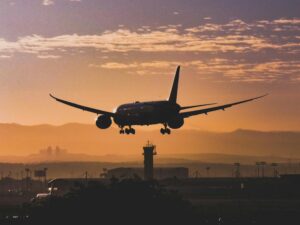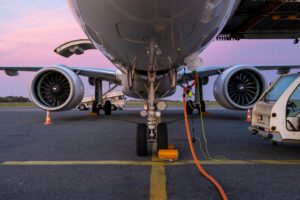Nigeria’s aviation fuel prices have skyrocketed from approximately N250 to N625 per liter in certain regions. This staggering increase exemplifies a broader crisis that obscures the sector’s true economic potential. Aviation should function as an economic catalyst, yet Nigeria’s approach has produced more “white elephant” projects than genuine growth engines.
The relationship between aviation and economic development resembles a partnership rather than a one-way street. Connectivity creates opportunity, but opportunity requires the right conditions to flourish. In Nigeria, these conditions have proven persistently elusive.
The Disconnection Between Infrastructure and Needs
Nigeria’s aviation infrastructure development frequently misses the mark by prioritizing prestige over practicality. State governors often commission grandiose projects, competing to build “the biggest” or “the most impressive” facilities without sufficient demand analysis. These politically-motivated investments prioritize ribbon-cutting ceremonies over long-term economic viability.
The result? Underutilized facilities that become financial drains rather than economic multipliers. When projects cost too much to build, operators inevitably pass those costs to airlines and passengers, further suppressing demand in a market already sensitive to price.
Realistic infrastructure development requires honest assessment of regional economic activities, passenger volumes, and freight potential. A modest, well-utilized regional airport serving actual demand generates more economic activity than an international-scale “ghost airport” operating at a fraction of capacity.
Passenger Experience: The Overlooked Factor
Nigerian air travelers routinely endure an obstacle course of inconveniences. Flights operate on schedules designed for operational convenience rather than passenger needs. Connection timing between domestic and international flights often forces unnecessary overnight stays. Basic amenities like reliable check-in services, adequate seating, and consistent baggage handling remain surprisingly elusive at many airports.
These frictions matter because they directly impact economic productivity. Business travelers waste valuable hours navigating inefficient systems. Tourism potential evaporates when visitors encounter frustrating first impressions. The Nigerian system essentially forces passengers to adapt to aviation constraints, rather than designing aviation services around passenger requirements.
The absence of systematic passenger research compounds this problem. Airlines and airport authorities operate with insufficient data about travel patterns, passenger preferences, and service gaps. Without this intelligence, strategic planning becomes guesswork rather than evidence-based decision-making.
The Airline Profitability Challenge
Nigerian airlines operate in a perfect storm of adverse conditions. They face wildly fluctuating fuel costs, currency volatility, and restricted access to foreign exchange. They struggle with duplicative regulation, high finance costs, and aging infrastructure that drives inefficiency.
Consider a typical aircraft turnaround operation. When ground services prove inadequate or unavailable, delays cascade through the system. Each delayed departure reduces aircraft utilization, increases crew costs, and potentially triggers compensation claims. These operational inefficiencies create a significant competitive disadvantage compared to carriers operating in more predictable environments.
Airlines globally have embraced ancillary revenue streams that contribute 20-50% of total income. Nigerian carriers have yet to fully capitalize on these opportunities, partly due to market constraints and partly due to outdated business models. Without these additional revenue streams, they remain excessively vulnerable to cost pressures.
The vulnerability becomes most apparent during fuel price surges like the recent jump to N590-N625 per liter. With fuel representing 30-40% of operating costs, such increases can rapidly transform marginally profitable routes into loss-making operations.
Tourism and Aviation: The Missing Synergy
Nigeria possesses abundant tourism potential that remains largely undeveloped. Its diverse landscapes, rich cultural heritage, and vibrant arts scene could attract significant international interest. However, the connection between tourism development and aviation planning remains weak or nonexistent.
Countries that successfully leverage aviation for economic growth typically integrate tourism strategy with air transport development. Thailand, Morocco, and Rwanda demonstrate how coordinated planning can create mutually reinforcing growth in both sectors. These countries align visa policies, infrastructure development, and airline route strategies to support tourism objectives.
Nigeria’s approach has been fragmented by comparison. Tourism promotion rarely influences aviation policy. Route development seldom considers tourism potential. The resulting disconnect undermines both sectors, preventing the virtuous cycle that powers tourism-driven economies elsewhere.
Air Freight: The Underdeveloped Opportunity
Nigeria produces agricultural goods with export potential, yet lacks the air freight infrastructure to efficiently move these products to international markets. Road transportation without adequate cold chain facilities results in approximately 60% of produce being damaged or wasted before reaching consumers.
While air freight costs more per kilogram than road transport, the value proposition becomes compelling when considering reduced spoilage and higher market prices for fresh produce. However, developing this potential requires coordinated investment in cold storage facilities, handling equipment, and customs processes specifically designed for perishable exports.
Agricultural exporters need more than occasional cargo flights. They require reliable, scheduled capacity that allows them to make firm commitments to international buyers. Building this capacity demands collaboration between agricultural producers, logistics providers, airlines, and regulatory authorities.
Economic Impact: Current vs. Potential
Nigeria’s air transport industry currently contributes approximately $600 million directly to GDP, representing just 0.04% of the economy. Foreign visitors arriving by air generate an additional $1.1 billion in economic activity. The sector supports approximately 241,000 jobs when considering direct, indirect, and induced employment.
These figures pale compared to countries with similarly sized economies but more developed aviation sectors. Morocco, with a smaller economy than Nigeria, generates over $7.8 billion from aviation and related tourism, approximately 7.8% of GDP. This comparison illustrates the scale of Nigeria’s untapped potential.
Realizing this potential doesn’t require magical thinking. It demands practical reforms addressing fundamental constraints. The aviation ecosystem needs policy stability, infrastructure reliability, operational predictability, and commercial viability. These fundamentals sound simple but require coordinated effort across multiple stakeholders.
Toward an Integrated Aviation Strategy
Transforming Nigeria’s aviation sector into a genuine economic catalyst requires an integrated approach that addresses infrastructure, operations, policy, and finance simultaneously.
Infrastructure planning must start with actual market demand rather than political prestige. Airport developments should be sized appropriately for realistic passenger and cargo volumes, with expansion capabilities for future growth. Construction costs must align with reasonable payback periods based on projected revenue.
Operational improvements should prioritize schedule reliability, passenger convenience, and aircraft utilization. Simple measures like coordinated flight connections between domestic and international services can significantly enhance the passenger experience while increasing overall demand.
Policy reforms need to address the multiple regulatory burdens, duplicative charges, and administrative obstacles that currently inflate costs and reduce competitiveness. Aviation fuel supply chains require particular attention to ensure reliable availability at reasonable prices.
Financial innovations could help airlines manage currency risks and access affordable capital for fleet renewal. Government’s role should focus on creating enabling conditions rather than direct subsidies that ultimately prove unsustainable.
The Path Forward
Nigeria’s aviation sector possesses tremendous latent potential to drive broader economic development. Unleashing this potential requires abandoning the flawed assumption that merely building infrastructure automatically generates growth. Instead, stakeholders must address the entire aviation ecosystem as an integrated whole.
The economic benefits could be transformative. Beyond the direct GDP contribution, a thriving aviation sector stimulates trade, investment, tourism, and regional development. It connects Nigeria more effectively to global markets and creates high-quality employment opportunities across multiple skill levels.
The current challenges – from fuel price volatility to infrastructure limitations – should be viewed not as permanent constraints but as problems awaiting solutions. With coordinated effort across public and private sectors, Nigeria can transform its aviation sector from an economic underperformer into a powerful engine for sustainable growth.
The choice isn’t between having aviation or not having aviation. The choice is between expensive, inefficient aviation that serves limited economic purpose and affordable, efficient aviation that drives broader prosperity. Nigeria deserves the latter, and achieving it remains entirely possible with the right approach.
Disclaimer: The insights shared in this article are for information purposes only and do not constitute strategic advice. Aviation markets and circumstances vary, and decisions should be based on your organisation’s specific context. For tailored consultancy and guidance, please contact info@avaerocapital.com.




